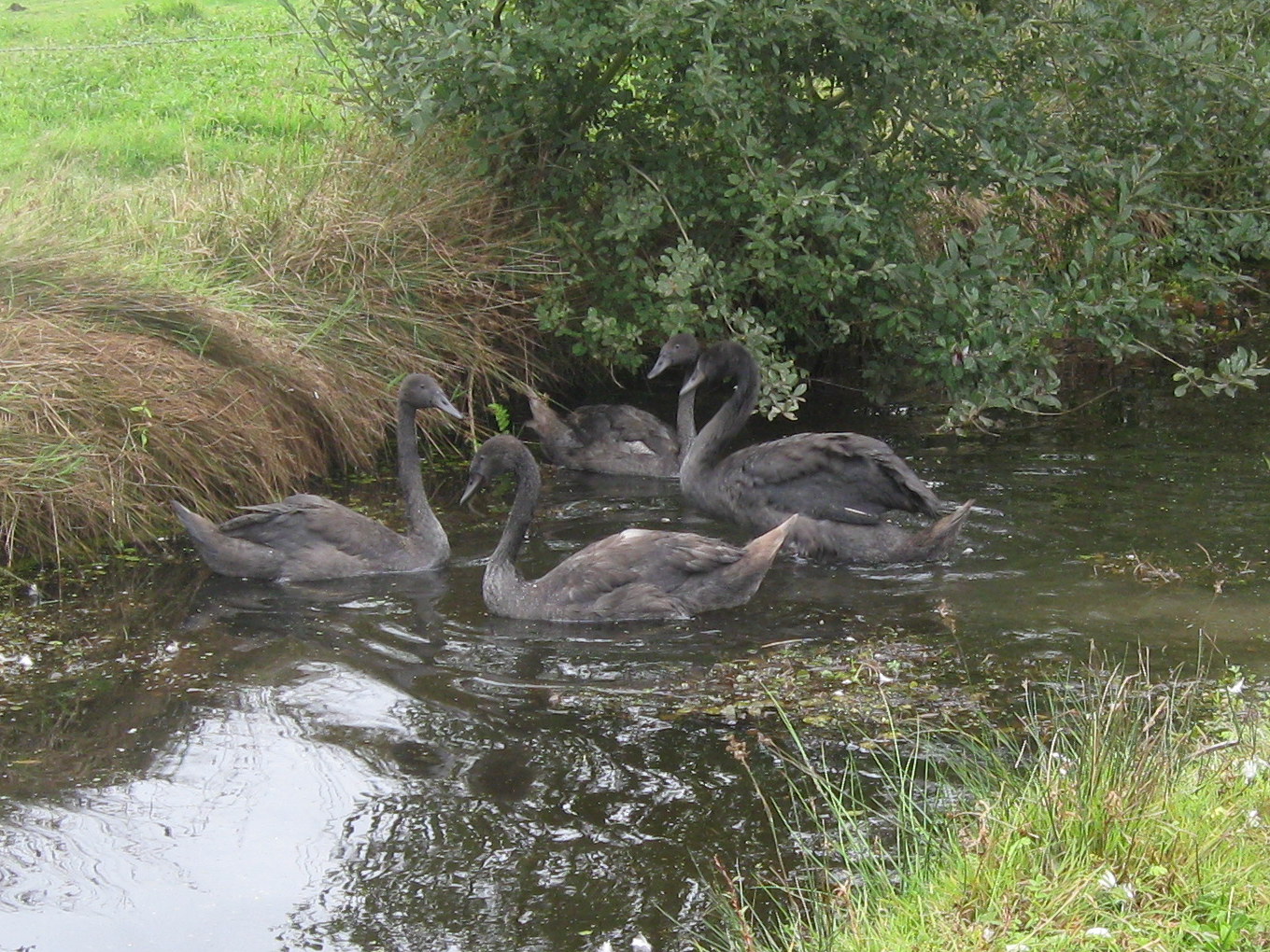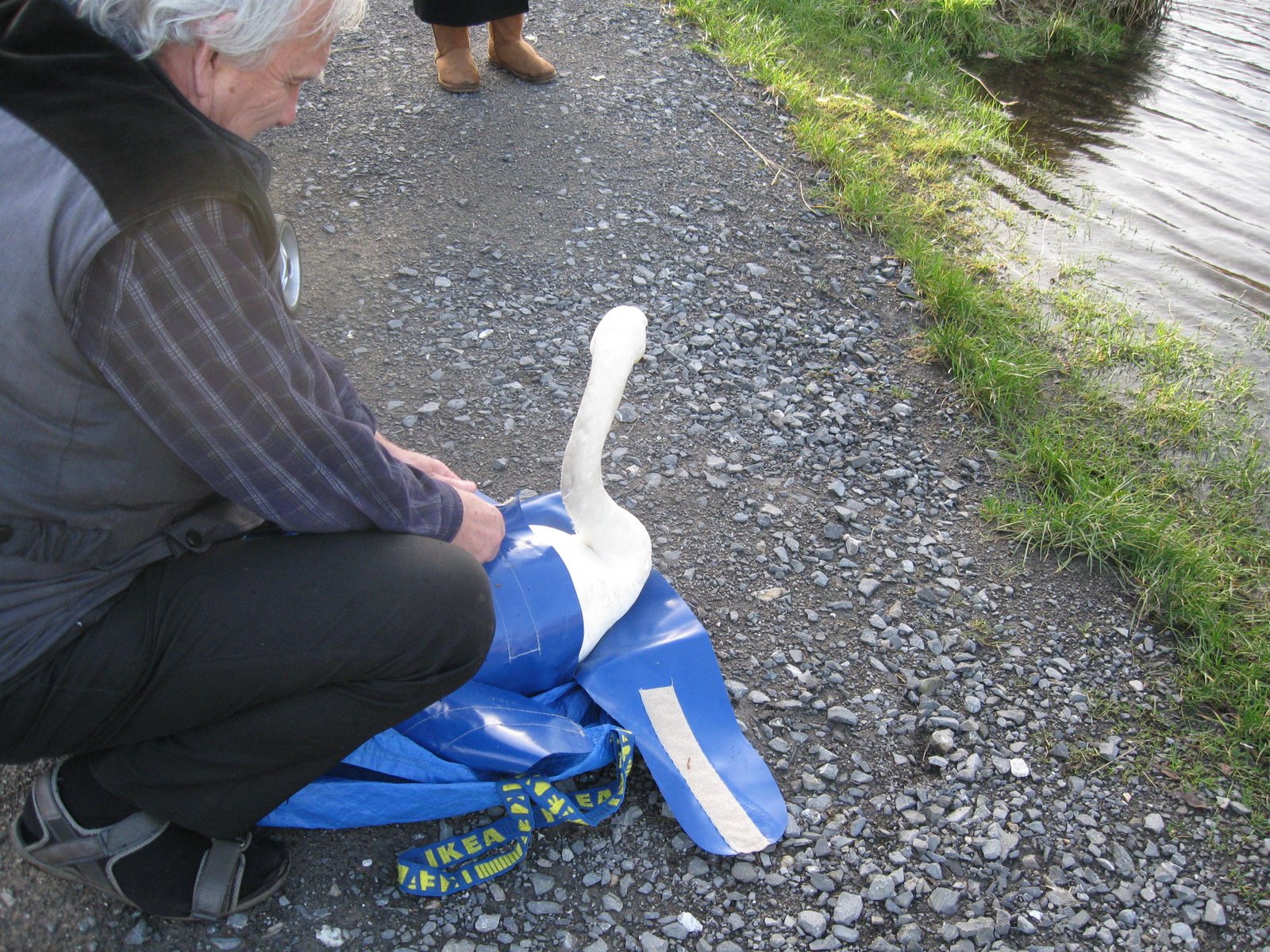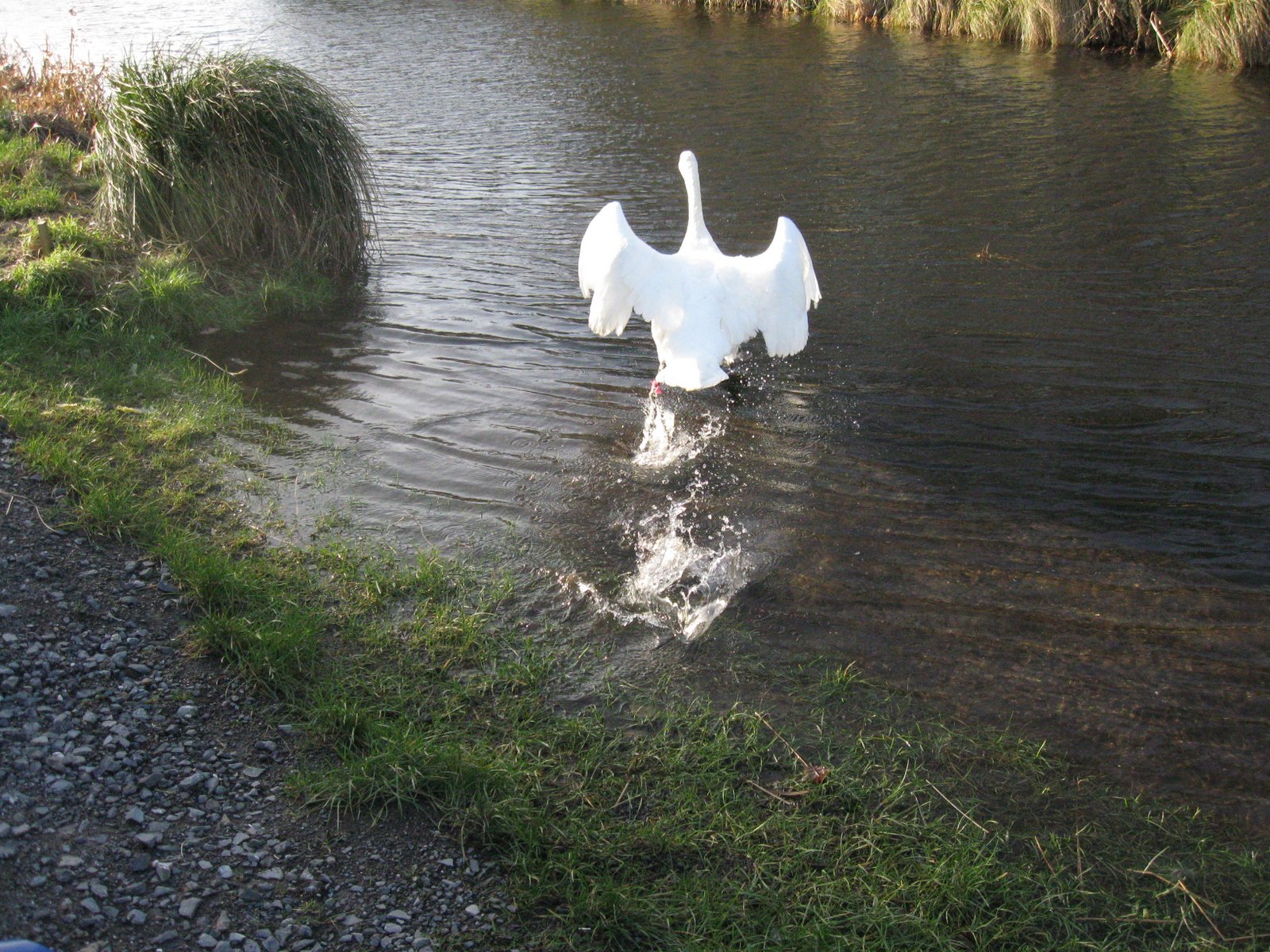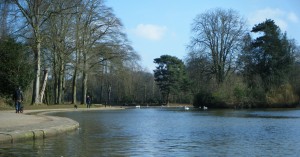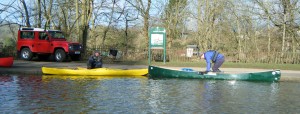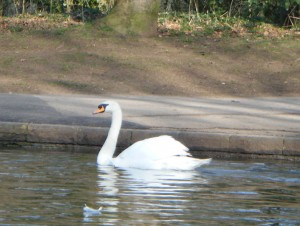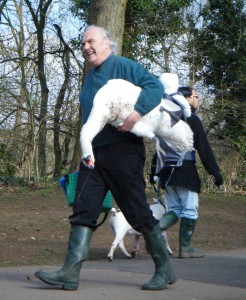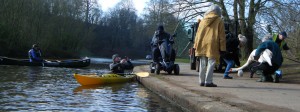Story written by Peter & Ellen, photographs by Ellen.
Calls requesting help to deal with a distressed or injured swan almost always come from telephones which are land based. But, thinking about it, given the ubiquitous nature of mobile phone ownership, it is perhaps surprising it took until July (2013) before we received a call from Daniel who was canoeing down the River Wye towards Symonds Yat. He had noticed what he took to be a very poorly swan – probably carrying fishing tackle – in the shallows, and not associating at all with the other swans nearby on the river. At the time, we were on the M5 returning from having delivered a number of baby gulls to the WildlifeHospital at West Hatch near Taunton. Thank goodness for the extended hours of daylight at this time of year as we still had something like 100 miles to travel before we could start looking for the swan.
Daniel had given us very precise instructions; we had to find a particular field containing pale brown cows and amongst which was a large bull …! Well, we found the field, and then, with not a little trepidation selected a circuitous route leading to the river bank. We found the swan, and clearly, he was in serious trouble, and so too, in a way, were we. The bank at this stage is extremely steep, and being July, the water level was low, so making a descent a very hazardous undertaking – quite apart from the difficulty of climbing back up the bank with the swan – assuming, of course success in catching him. Success seemed more likely to be assured by making an approach from the river itself. Fortunately, we’ve worked in this area before, and so we know a few people. One such is Chris who owns and runs a local canoe hire business, so we called upon him. Chris was his usual friendly and co-operative self, but, being the holiday season was extremely busy – a situation made worse by the fact he was also short staffed. He was perfectly willing to do what he could to help, but not before the second half of the following day.
As things were, this enforced delay was not a problem at all. In response to another call from Tata Steel at Port Talbot, there was a need to travel west first thing to collect an injured gull; this was passed to Vik who runs FAUNA Wildlife Rescue in Cardiff. Amidst all of this, there was another call – this time from Llandarcy, the site of a long since dismantled oil refinery near Swansea, but now an immense urban renewal site, where we knew of two oiled swans. Previous attempts to catch them had failed, but now an elevated level of concern was being expressed regarding their welfare. So, with there still being sufficient time for another trek down the M4 before presenting ourselves at Symonds Yat, we set off once again. Unfortunately, catching these birds was never going to be a practical proposition on this occasion – but that’s another story!
And so back to Symonds Yat, where our first task before making contact with Chris, was to obtain a precise location for the swan. This proved to be straightforward; he had moved only a short distance from where we had seen him the previous evening. Given the complexity of Chris’s arrangements and commitments, he decided to accompany us back to where we had last seen the swan, and so to make his own assessment. By now, the swan had crossed the river and was on the far side, but was clearly very lethargic/weak. What followed seemed to happen very quickly. We were close to the bridge which provides road access to Symonds Yat East, where, most importantly, there was reasonable access to the waters edge. As luck would have it, there were a few canoeists fairly close by (in boats hired out by one of Chris’s competitors!). Chris hailed one of them, explained the problem and secured their agreement to allow Chris and myself aboard. Thus it was, with one heavily overmanned canoe, and a hugely overweight angler on the bank with a net, we succeeded in capturing ‘our’ swan.
It is no exaggeration to state it took us a matter of seconds to establish the full horror of what had befallen this poor hapless swan.
Well to the back of his tongue was lodged a medium sized triple barbed hook, which, to make matters worse, was showing signs of significant corrosion.
The shaft of the hook was jammed against the lower outside part of the beak and had already started to cut into it. Small wonder, at 6.5 kg, the bird was seriously underweight, and would not have eaten for many days. For fear of making matters worse, the next decision was amongst the quickest and easiest we have ever made; we needed to get this bird to the Swan Sanctuary at Shepperton as quickly as possible, in the certain knowledge the appropriate skills and equipment would be used immediately to bring the torture to which this poor bird had been subjected to an end, and also to guarantee the requisite level of aftercare, including the necessary application of antibiotics.
We are under no illusions as to another aspect of this awful story. The fisherman who will have known he had lost the hook – a truly awful instrument of torture as it turned out – will not have spared a moment’s thought as to the consequences of his loss. It would be good if we could be certain a few fisherman stumble across this article, and pass on the essential message which it carries, that is quite apart from the crucial role played by one caring canoeist who spotted the problem, and the indispensible help provided by Chris in making the rescue possible. Without these, this swan would have died alone and in agony. We owe them both our sincere thanks.






